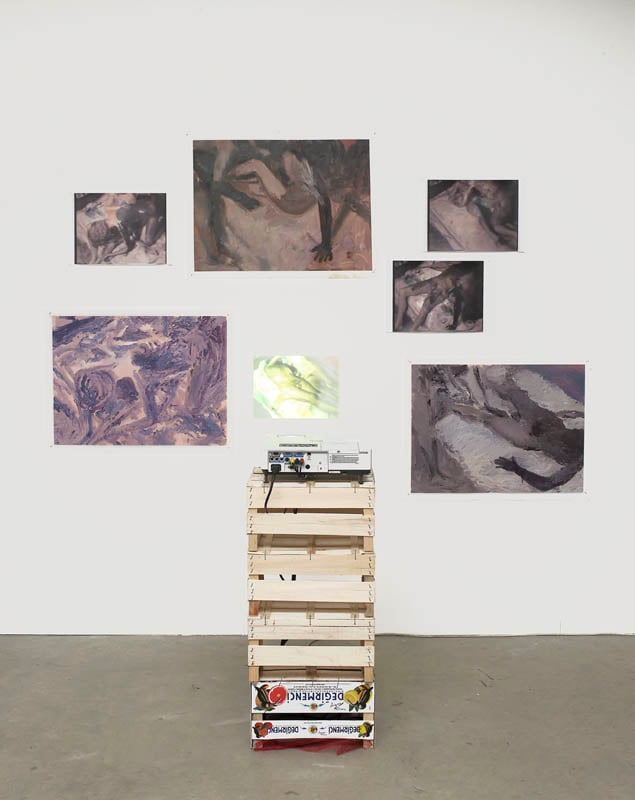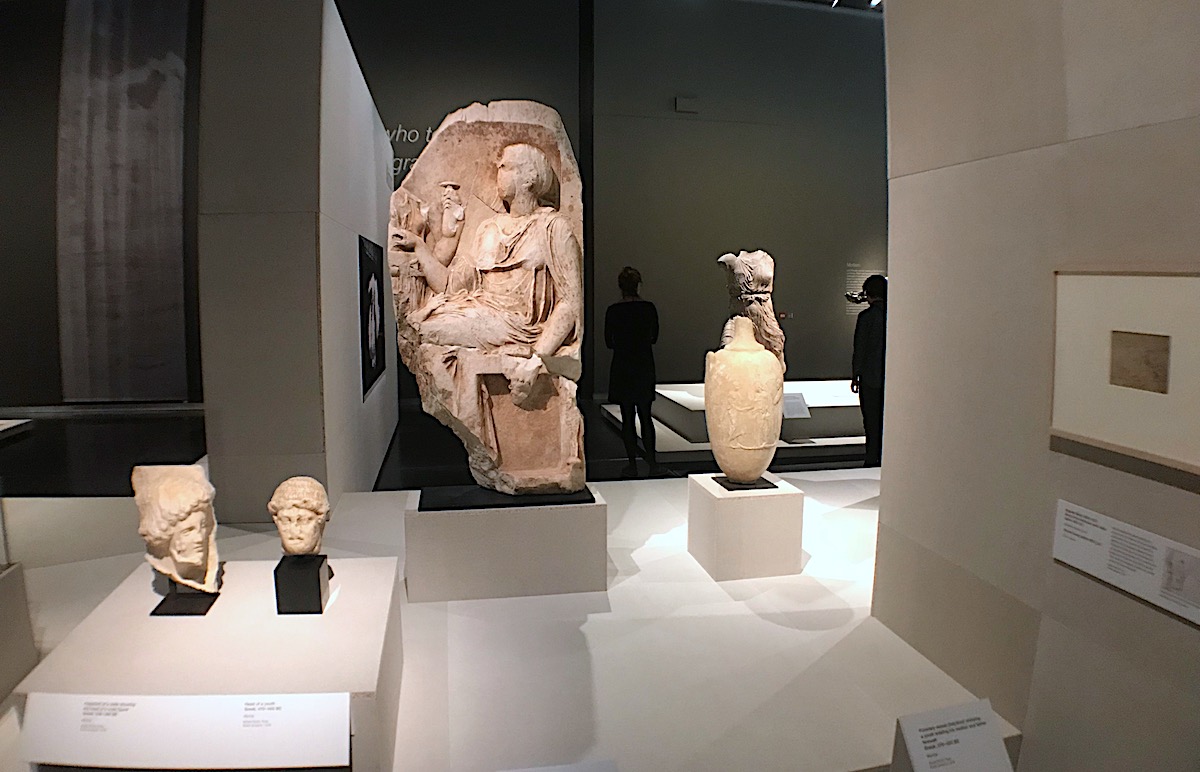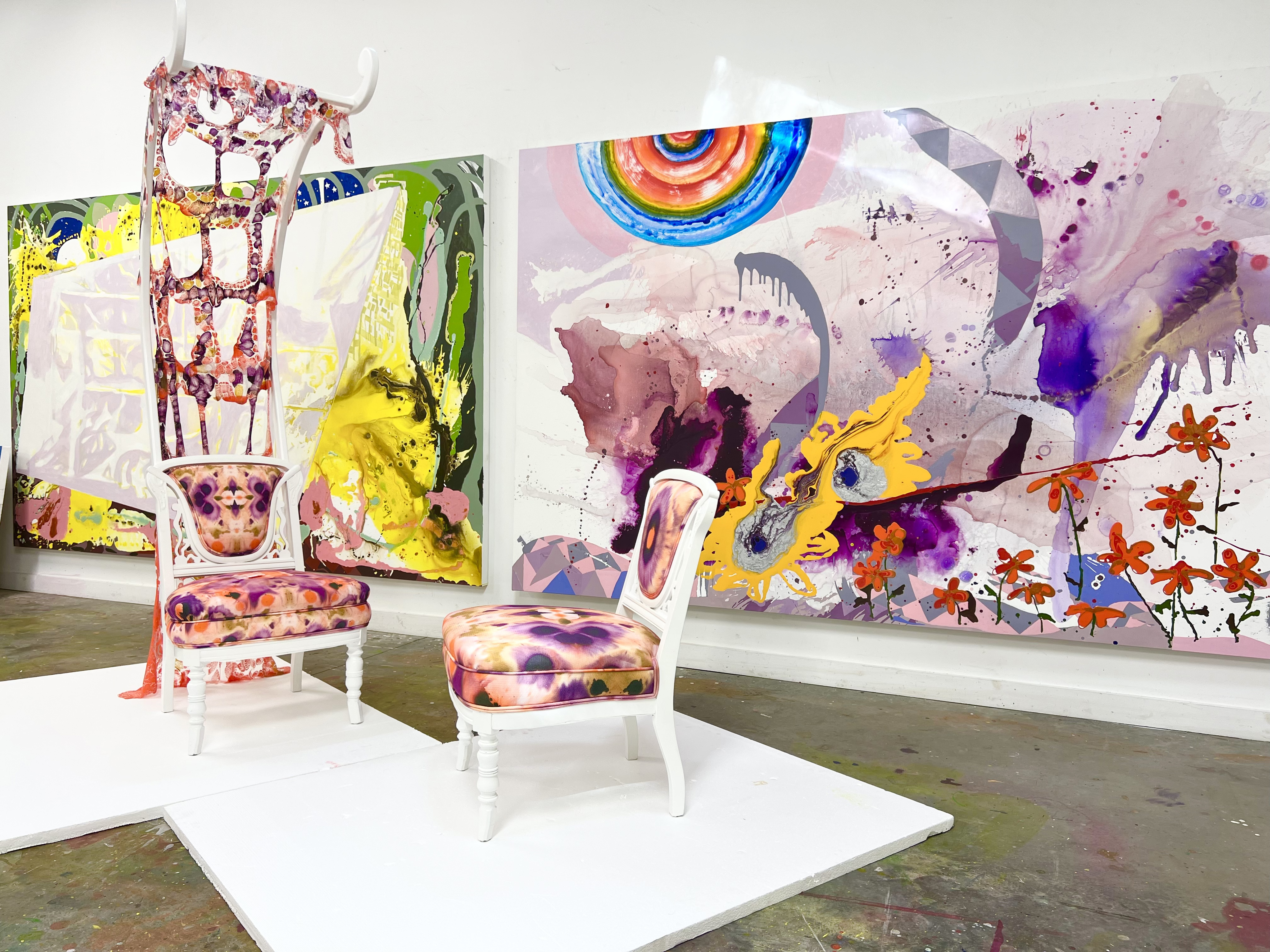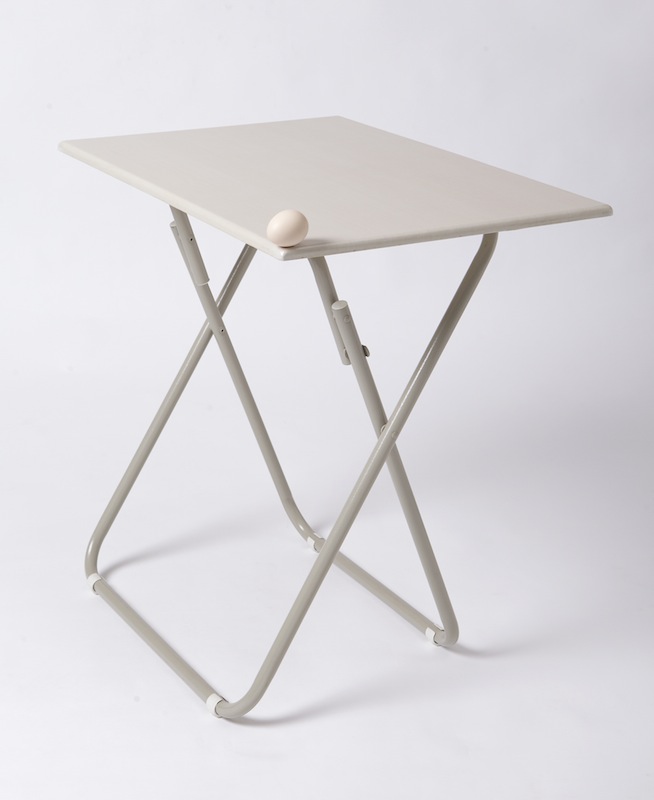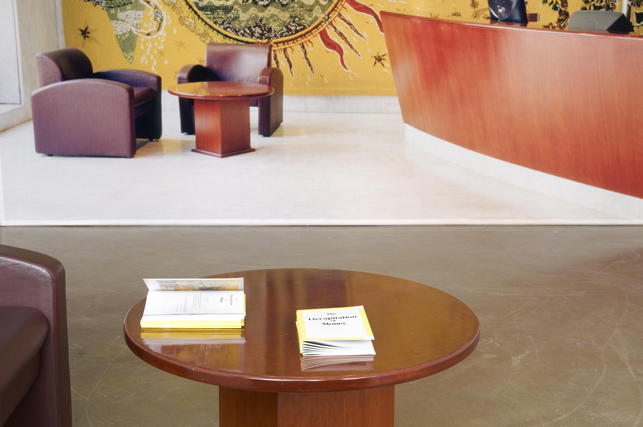Ambiguous Gestures
2004 - Installation (Installation)
Felix Gmelin
Ambiguous Gestures takes as its point of origin a film Gmelin discovered in his father’s archive. Filmed from a fixed point, it portrays his father in an intimate performance of body painting with a woman unknown to Felix Gmelin. The discovery of this footage was obviously disturbing. On the one hand there is an erotic encounter with someone who is not Gmelin’s mother; on the other hand the performance itself is strangely unerotic and unsensual. The performance clearly references the work of Klein and the Viennese actionists but has an Arcadian element divorced from the Viennese school. Two acts of painting take place; the mutual painting of bodies and the impression of those bodies on a series of canvases. Taking that as his own starting point, working from stills Felix Gmelin then painted his own paintings with the help also of an assistant, thus paralleling the process of his father. He wanted to focus on the painting aspect of the film rather than its erotic potential and draw a comparison between painting and film, further enhanced by the display of stills that forms part of the installation. The grisâtre quality of the paintings serves to highlight the intense colour of the film. By making what in some respects are conventional paintings from this most intimate of films, and painting found images, Gmelin neutralises its erotic charge, making the film ‘innocent, beautiful and affirmative’. While the film is ‘embarrassing in every possible sense’ to the artist, its conjunction with his paintings and the stills transforms it into another manifestation of a utopian project. Gmelin cleanses his father ‘s work literally and metaphorically, washing the film and creating paintings using rubber gloves and brushes.
With a degree in painting and inspired by so-called institutional criticism, Felix Gmelin is interested in the possibilities of painting as a form of resistance and its direct relation to a form of socio-political reality. He is frequently known to rework the experiences of his youth into his art. In a critical, yet personal investigation, he subtly unravels the complicated interweaving of self-development, socialization and emancipation with which he grew up in the late 1960s and 1970s. Gmelin’s first substantial work in which reproduction served as a productive impetus was Art Vandals (1996-1998), a series of 12 paintings and one object, modeled after examples of modern and contemporary artworks, all of which had been vandalized. His interest in degenerate art also falls within the interest of vandalism. The emptying of meaning is a consistent theme in his work, as a number of Gmelin’s paintings. Felix Gmelin was born in Heidelberg in 1962 and has lived in Stockholm, Sweden, since he was nine.
Colors:
Related works sharing similar palette

© » KADIST
Until It Makes Sense October 15 – December 11, 2011 With: Saâdane Afif – Yto Barrada – Matti Braun – Matthew Buckingham – Peter Friedl – Mario Garcia Torres – Pratchaya Phinthong – Walid Raad Curator: Jean-Marc Prevost The exhibition gathers an ensemble of works from the Kadist collection which remain open to suspensions and to shifts in meaning...

© » KADIST
Asier Mendizabal
2012Rotation presents the image of a crowd, a re-appropriation of 19th or beginning of 20th century photographs published in newspapers and magazines...
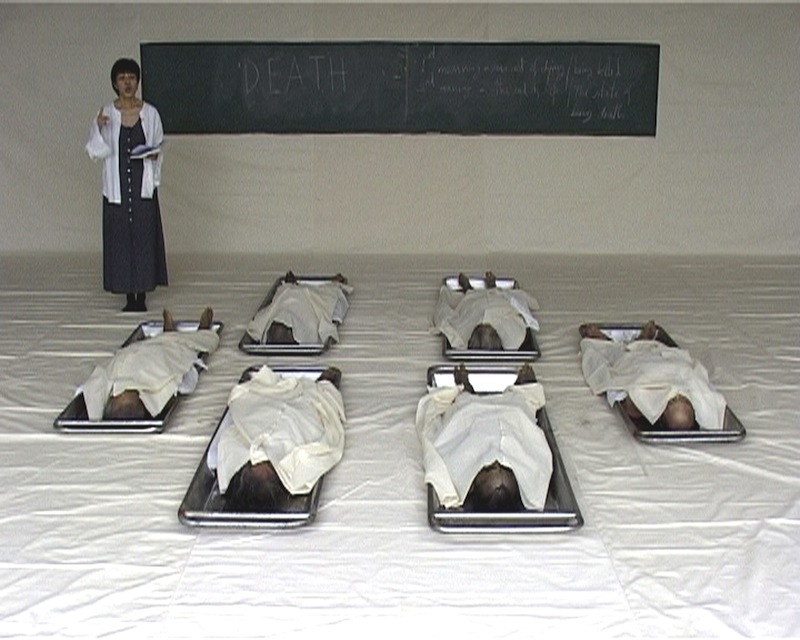
© » KADIST
Araya Rasdjarmrearnsook
2005The Class (2005) by Araya Rasdjarmrearnsook challenges the viewer’s personal sense of morality and tolerance by depicting a classroom from hell...
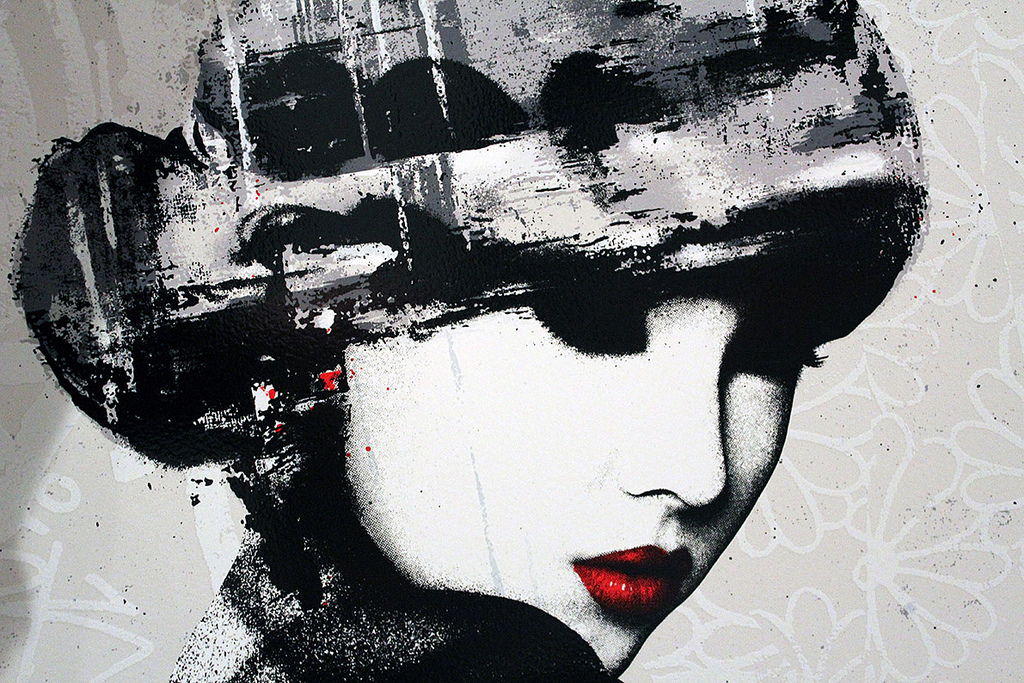
© » ARTREPORT
British Street Artist Hush Makes His Curatorial Debut At NY’s Vandal – Art Report News ARTISTS Artist Highlights Artist Interviews Studio Visit VIDEOS ART+ Community Listicles No Result View All Result News ARTISTS Artist Highlights Artist Interviews Studio Visit VIDEOS ART+ Community Listicles No Result View All Result No Result View All Result British Street Artist Hush Makes His Curatorial Debut At NY’s Vandal by December Projects Jan 22, 2016 in Artist Interviews 0 Installation Close Up, Hush...

© » KADIST
Karl Haendel
2011Haendel’s series Knights (2011) is a set of impeccably drafted, nine-foot-tall pencil drawings depicting full suits of armor...

© » KADIST
Proyecciones Espacio Odeón (Bogotá, Colombia) y Museo La Tertulia (Cali, Colombia) ¿Cómo enfrentamos la incertidumbre de estos tiempos? ¿Puede el juego, los sueños, o incluso las alucinaciones ayudarnos a imaginar otras posibles trayectorias? ¿Qué tipo de prácticas nos permiten relacionarnos con los territorios que habitamos? Tomando como punto de partida el potencial de lo inquietante en medio de una amenaza invisible, Sigo esperando es una serie de proyecciones en las fachadas del Espacio Odeón (Bogotá) y del Museo La Tertulia (Cali)...
